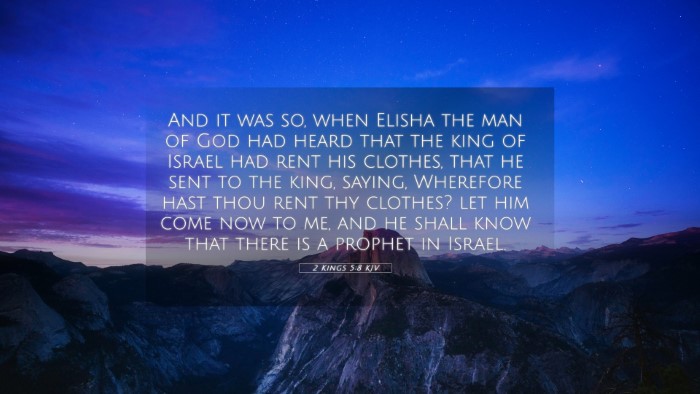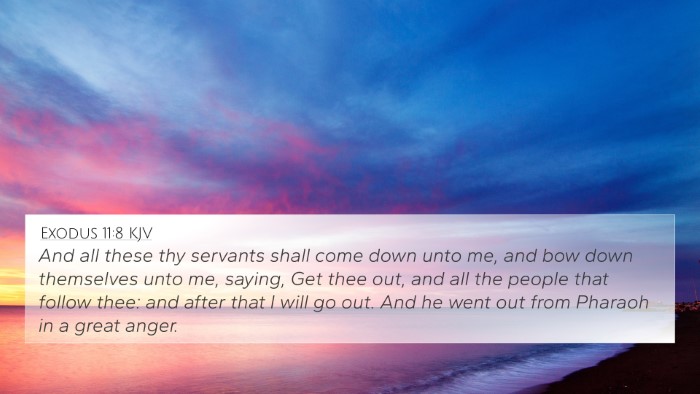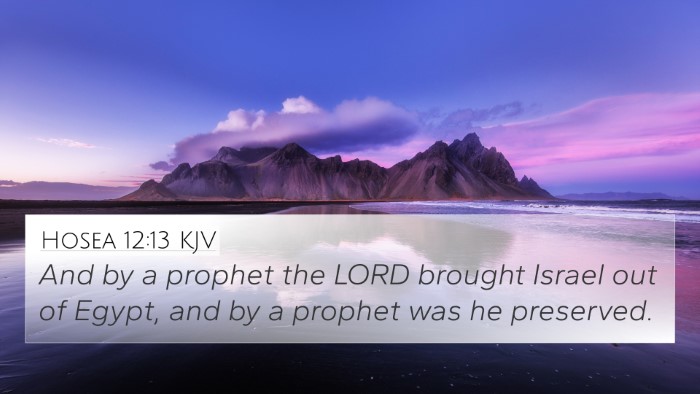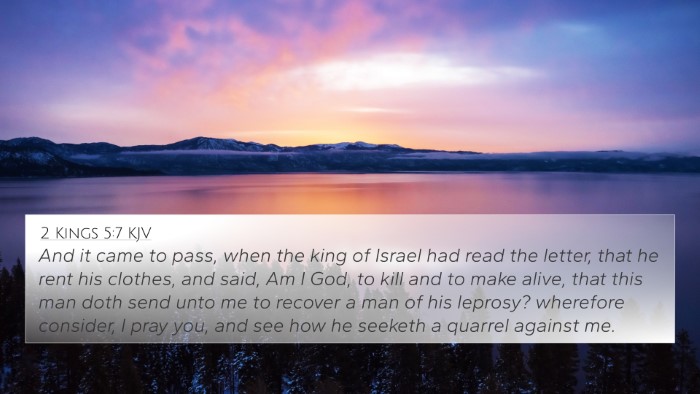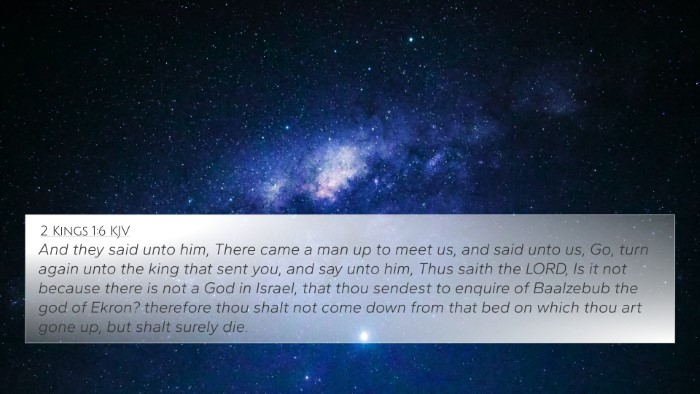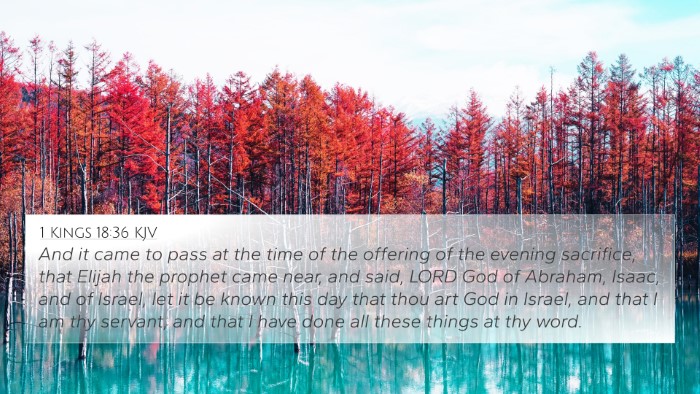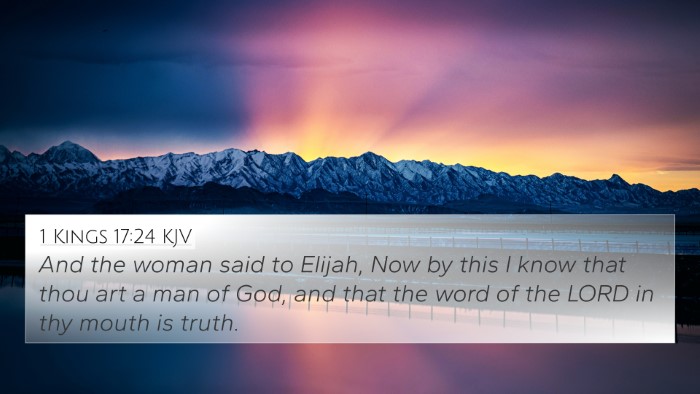Bible Verse: 2 Kings 5:8
In 2 Kings 5:8, we find a pivotal moment in the life of Naaman, a Syrian commander, who sought healing from his leprosy. This verse reveals the complexity of faith, obedience, and the divine workings of God through the prophet Elisha. Understanding this verse requires an insight into the context and the underlying themes that connect it with other scriptural passages.
Verse Context and Summary
When Naaman seeks healing, he is directed by a captive Israelite girl to Prophet Elisha. The verse states:
“So it was, when Elisha the man of God heard that the king of Israel had torn his clothes, that he sent to the king, saying, ‘Why have you torn your clothes? Please let him come to me, and he shall know that there is a prophet in Israel.’”
Commentary Insights
This verse can be deeply understood when drawing insights from various public domain commentaries:
- Matthew Henry: Henry emphasizes the importance of recognizing God's power through His prophets. He highlights that Elisha’s sending for Naaman illustrates the accessibility of God’s grace to all, irrespective of their nationality or previous standing.
- Albert Barnes: Barnes notes the significance of Elisha's role as God's messenger. He interprets the sending for Naaman as an invitation to faith, demonstrating God's willingness to heal those who come in humility.
- Adam Clarke: Clarke stresses the miraculous nature of Naaman's healing as a testament to God’s mercy. He explains that Naaman's journey reflects the broader theme of redemption and faith found throughout scripture.
Thematic Connections between Bible Verses
To truly appreciate 2 Kings 5:8, we should consider its connections to various other biblical texts. The following cross-references offer valuable insights that contextualize and deepen our understanding of healing, faith, and God’s sovereignty:
- James 5:14-15: Discusses calling the elders for prayer and healing, paralleling Naaman's act of seeking divine intervention.
- Matthew 8:5-13: The healing of the centurion’s servant depicts faith similar to Naaman’s, showing that faith transcends ethnicity.
- Mark 1:40-42: Jesus heals a leper, presenting a New Testament fulfillment of God’s compassion for the afflicted.
- Exodus 15:26: The Lord as a healer, reinforcing His role throughout the Bible as the one who heals and brings wholeness.
- Isaiah 53:5: Speaks of healing through the suffering servant, connecting to the greater redemptive narrative.
- Luke 17:11-19: The story of the ten lepers highlights the thankfulness and recognition of healing God's provision.
- John 9:1-7: Jesus heals the man born blind, emphasizing that God's works may be displayed, akin to Naaman's testimony.
- Romans 10:17: Faith coming through hearing the word of God, akin to Naaman hearing about Elisha.
- 2 Corinthians 5:7: Walking by faith, not by sight, which Naaman had to practice by following Elisha’s instructions.
- Hebrews 11:6: Without faith, it is impossible to please God, reflective of Naaman’s actions in his quest for healing.
Inter-Biblical Dialogue
In addition to the individual references, the dialogue between the Old and New Testament provides a rich tapestry of understanding and interpretation. Following Naaman's narrative, we see recurring themes of healing and God’s grace manifested through faith. The transition from the Old Testament reliance on prophetic figures to the New Testament realization of Christ as the ultimate healer shows a fulfillment of these themes.
Conclusion
2 Kings 5:8 serves as a vivid reminder of God’s willingness to heal and the faith required to receive it. Each commentary, interconnected verse, and thematic tie adds depth to our understanding of this account. As we explore these links, we gain a broader perspective on the nature of divine healing, the importance of faith, and God’s overarching plan for His people.

